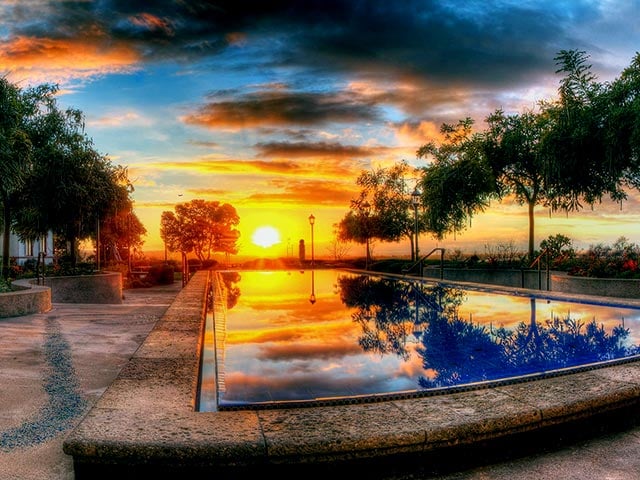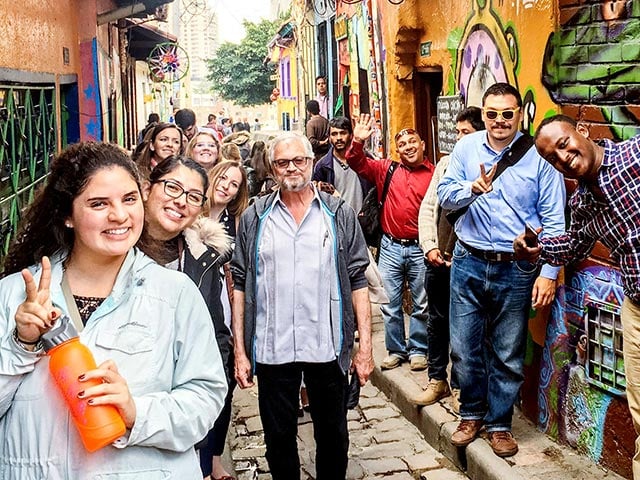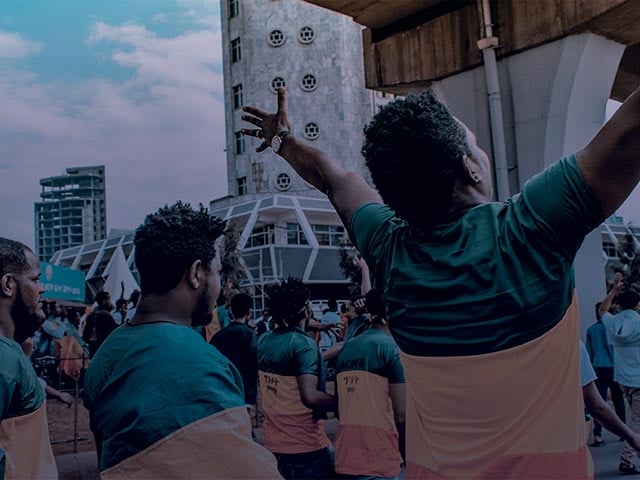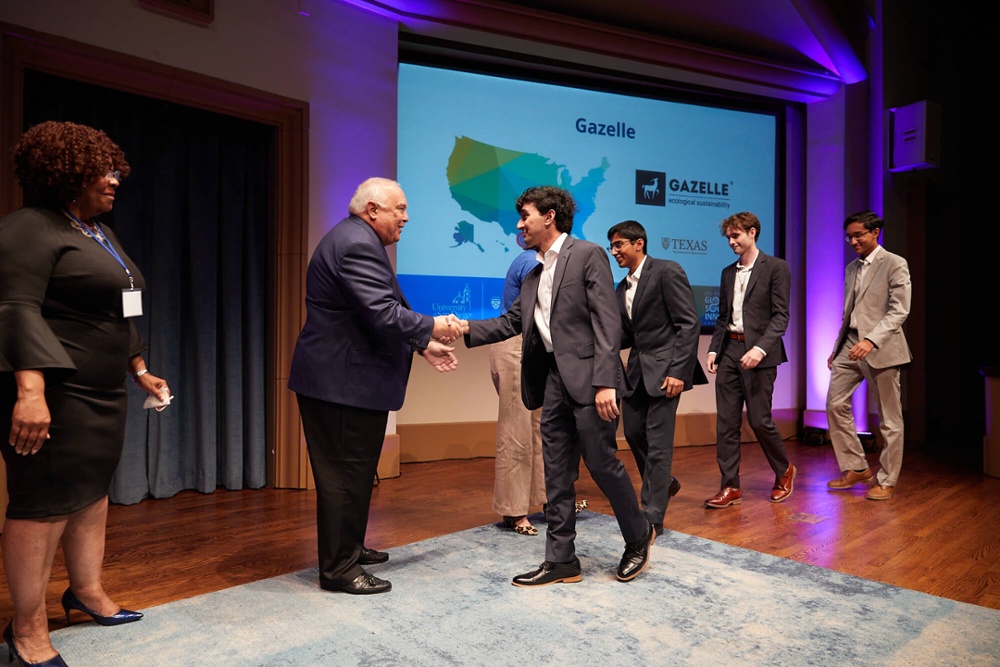This blog post was written by Twila Albrecht, MS in Conflict Management and Resolution Student at the Kroc School.
A trip to Northern Ireland
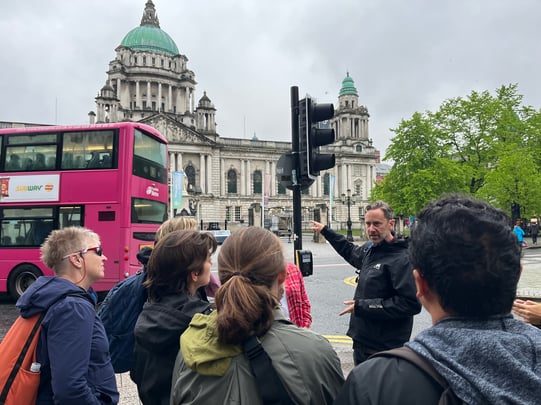 Professor Michael Fryer leading the class in a discussion outside of the Belfast City Hall
Professor Michael Fryer leading the class in a discussion outside of the Belfast City Hall
In a recent field-based course in Northern Ireland, led by Professor Michael Fryer, our group met with Dr. Derick Wilson, Emeritus Reader in Education at Ulster University, specializing in Restorative Practices. Dr. Wilson described Northern Ireland as “a beautifully bitter place.” That phrase stuck with me throughout our time there. The beauty was apparent. And though we heard stories and saw remnants of the bitter, I could not fully grasp the generational trauma of it all. I was left trying to put the various pieces together - hearing dichotomies of us and them, and also of the large gap in between. In the weeks since our visit, here are the questions I continue to process:
How do we interact with the interfaces, the walls?
What do the bifurcation points look like?
How do we tell the collective story?
What are my groundings?
⬤
Interfaces
Early in the week, the group participated in a number of tours around the city of Belfast. As we got oriented to the city, we learned of traditionally divided neighborhoods and saw the walls and murals intended to distinguish between us and them, Protestant and Catholic. We also saw softer interfaces, like art intended to connect people painted on the very walls that were intended to divide.
This raised questions like, if the walls were built during the height of violence and the city now has relative peace, then how do you decide when to take down the walls? How are we meant to interact with each other across differences, both apparent and not?
 A Solidarity Mural in Belfast
A Solidarity Mural in Belfast
On one afternoon, we met with Liza Wilkinson, Director at TIDES Training & Consultancy. In our discussion, Liza reminded us that it’s not about changing views but being exposed to other views. Liza invited us to consider “interface reimaging” in our own voice.
Dr. Wilson also spoke of tending softer interfaces. As peacebuilders, we need spaces to experience the intimacy of differences, where it is possible to speak our views without fear of isolation or violence. This of course requires us to take risks and appropriately attend to what kind of spaces are needed in a given context, including whether they are public or private.
⬤
Bifurcation points
According to Wikipedia, “Bifurcation theory is the mathematical study of changes in the qualitative or topological structure of a given family of curves…” I know nothing about mathematics, but I am intrigued with the simple definition of a bifurcation point, which in this case I understand to be the stage at which an interaction or conversation can go one way or another. I often found myself wanting to explore bifurcation theory within the context of peacebuilding during this trip.
The violence and conflict in Northern Ireland, and the history of the Troubles, is well-documented. While we immersed ourselves in this literature before the trip, it struck me that Professor Fryer made an effort to highlight the places and moments where violence could have very likely erupted, but didn’t. We heard stories from bridge-builders, like Dr. Wilson and Liza Wilkinson, who continue to model something different.
⬤
Our collective story
One of my very favorite afternoons was spent with Jonny McEwen at Vault Studios. Jonny is an artist and invited us to scribble and write and tell a new story of our collective experience in Northern Ireland. We were bridging theory and practice in the activities that Jonny led us through. What we created together was a true representation of our community in that moment, though it may not mean much to anyone else [see image]. A pencil, some charcoal and a piece of paper: these are the tools for artists of social change whose medium is the present moment.
⬤
Groundings
Our course in Northern Ireland came to a conclusion at Corrymeela, where we rested and reflected on the week. The words homecoming and homegoing were floating around the spaces of my mind. At one moment, a few of us were circled around in the parking lot talking with Paul Hutchinson. Paul said something along the lines of: I know where I come from. I know my place in the world. I know my little piece. What’s your little piece?
In our closing discussion as a group, we were invited to consider our groundings, the places and moments that, through memory, allow you to return to who you are. I was reminded of these words from Pádraig Ó Tuama’s poem “[the] north[ern] [of] ireland:”
And at the end of the day,
the reality is
that whether we
change
or whether we stay
the same
these questions will
remain.
Who are we
to be
with one
another?
and
How are we
to be
with one
another?
Experiential learning is a vital part of the Kroc School's approach to education. Are you interested in learning more? Discover our global learning opportunities here.
.jpg)
About the Author
Twila Albrecht is a MS in Conflict Management student at the Kroc School

